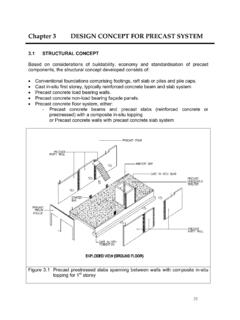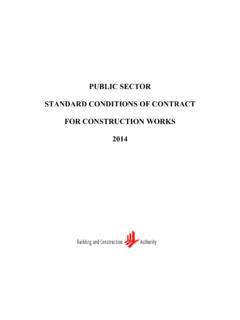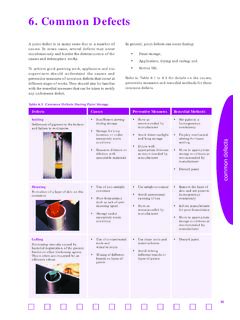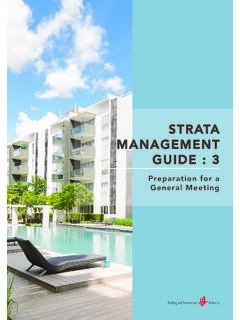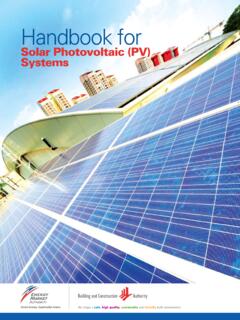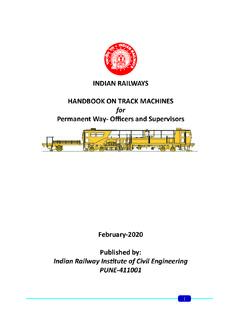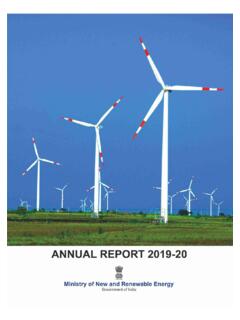Transcription of Guide on Construction of Industrial Developments in ...
1 Guide on Construction of Industrial Developments in Singapore Foreword Singapore s Industrial development has gone through a vast transformation over the past few decades; from Developments for labour-intensive industries, garments, textiles, wood products in the 60s to skill-intensive industries, computer parts, computer peripherals, software packages and silicon wafers in the 70s. In the 80s to 90s, emphasis was on technology-intensive industries electronics. At the turn of the century, with increased focus on knowledge and innovation-intensive activities, industries such as biomedical sciences flourished. The increase in the number of Industrial Developments has contributed significantly to the economic growth of Singapore. In today s fast moving and competitive economic environment, it is important to have a good knowledge of the regulations and procedures involved to achieve efficient and speedy completion of any Industrial Developments .
2 The aim of this Guide is to provide investors and industry players, developers, consultants and builders, with an overview of the key regulations, processes and procedures involved in the planning, design, construct and implementation of an Industrial building development. Contents Introduction 1 Overview of key regulations 2 Development planning & control 7 Building & structural safety 12 Fire safety 24 Environmental Control - pollution control, sewerage, drainage & environmental health 31 Utilities - water supply 47 Utilities - electricity & gas supply 53 Frequently Asked Question (FAQ) 63 List of websites for registers of local professionals 75 Information on other relevant government agencies 76 Acknowledgement 78 Published in 2010 Note: Procedures and requirements highlighted in this Guide are accurate and up to date as at the time of issue. Nothing herein shall be construed to exempt any person submitting an application or any plans from otherwise complying with the provisions of the Act or any rules and/or guidelines made there under or any Act or rules and/or guidelines for the time being in force.
3 The various authorities reserve the right to change their policies and/or to amend any information in this document without prior notice. Introduction 1 Introduction This Guide serves as a reference to provide investors, developers, consultants, builders and any parties, who intend to undertake Industrial development but are not familiar with the regulatory requirements, processes and procedures with some basic information on how to approach, plan, design, construct and implement the requirements in an Industrial building development. It is not a statement of the law but is intended to help you understand the system. This Guide provides an overview of the major regulations, submission and approval procedures involved for the carrying out of any Industrial Developments . In the subsequent chapters, details on the requirement of the various key government agencies have also been incorporated and a chapter has been devoted to the frequently asked questions (FAQ).
4 The Guide ends with a list of contact information on other common government agencies that may need to be consulted for the development of Industrial buildings. 2 Overview of Key Regulations Development and Building Control Systems Overview of Key Regulations 3 This chapter gives an overview of the key regulations involved for the development of Industrial buildings in Singapore. In general, Industrial Developments will have to comply with the relevant regulations on the following aspects Development Planning & Control, Building & Structural Safety, Fire Safety, Environmental Control, Utilities (water, electricity & gas supply). A schematic of the interdependence between the various aspects of Regulatory Control Systems and Technical Clearances is as shown. Apply for planning permission Obtain provisional permission Apply for structural plan approval Apply for building plan approval Obtain planning permission Development Control System (URA) Building Control System (BCA) Pollution Control & Environmental Health (CPBU) Drainage & sewerage (CPBU) Technical Department clearances Water (PUB), electricity & gas (EMA) Others, roads, parks etc Completion certificate & occupation permit Submit Lodgement Fire safety approval (FSSD) Overview of Key Regulations 4 Development Planning & Control To carry out any Industrial Developments , planning permission from the Urban Redevelopment Authority (URA), Singapore's national land use planning authority will first have to be obtained.
5 For the issuance of planning permission, the development proposal will have to comply with planning requirements, such as use quantum, building height, setback, plot ratio, vehicular access, plot configuration, land/building subdivision. A formal Written Permission (WP) would be given if the proposal has complied with all the planning requirements or a Provisional Permission (PP) may be granted with conditions imposed if the proposal has outstanding development issues. Alternatively, the development proposal can be submitted under the URA Plan Lodgment Scheme. The development proposal is authorised once it is lodged under the Plan Lodgment Scheme. Building & Structural Safety This is followed with the submissions to the Building and Construction Authority (BCA) to comply with the regulations imposed for building and structural safety. The BCA develops and regulates Singapore's building and Construction industry to shape a Safe, High Quality, Sustainable and Friendly built-environment for Singapore.
6 Before the Construction work can commence on site, approval of the structural plan for the development and a permit will have to be obtained from the BCA. The application of plan approval can be submitted to the BCA while seeking planning permission from the URA. Once the plans are approved and the permit to start work is issued, the Construction work can commence on site. In the mean time, consultation with other relevant technical agencies or departments Fire Safety & Shelter Department (FSSD), Central Building Plan Unit (CBPU) of National Environment Agency (NEA), Public Utilities Board (PUB) and Energy Market Authority (EMA) can be made to incorporate their requirements onto the building plans. Fire Safety Industrial Developments will also need to comply with fire safety requirements stipulated by the Fire Safety and Shelter Department (FSSD). The FSSD administers the Fire Safety Act and Civil Defence Shelter Act and regulates fire safety and CD shelter standards in Singapore.
7 Fire safety plans complying fully with the requirements stipulated in the Fire Code (Code of Practice for Fire Precautions in Buildings) will have to be submitted to FSSD for approval. Upon the satisfactory completion and inspection of the fire safety works, Fire Safety Certificate (FSC) will be issued by the FSSD before the building can be allowed to use or occupy. Overview of Key Regulations 5 Environmental Control The Central Building Plan Unit (CBPU) of NEA provides one-stop service for clearance of Industrial Allocation/Land use applications, Development Control (DC) Plans and Building/Detailed Plans (BP/DP) for development proposals on environmental matters consisting of Pollution Control, Environmental Health, Sewerage/Sanitary and Drainage Matters. CBPU screens and assesses the hazards and pollution impacts of the proposed development to ensure that they do not pose unmanageable health and safety hazards and pollution problems, and do not generate wastes that cannot be safely managed and properly disposed off.
8 Utilities - water supply Developer / Consumer shall engage an appropriate water service work (Professional Engineer or Licensed Water Service Plumber) to design, construct, alter or repair at his own cost the water service installation within his premises to convey the supply of water from the Public Utilities Board (PUB). Prior to commencement of water service works, water service workers are required to notify PUB, Water Supply (Network) Department by submitting the site plan and schematic drawings of the water service installation. Upon completion of the water service works, water service workers are required to submit a Certificate of Satisfactory Completion of Water Service Work certifying that the water service installation is completed in accordance with the Public Utilities (Water Supply) Regulations, Singapore Standard CP 48 Code of Practice for Water Services, all other relevant statutory requirements and other PUB requirements.
9 Utilities - electricity & gas supply The Energy Market Authority (EMA) sets out the regulatory framework for both electricity and gas industries. At the same time, the EMA promotes effective competition in the energy market and ensure a reliable and secure energy supply. Consumers who wish to have their electrical installations connected to the electricity transmission system should submit their applications to SP Services through their Licensed Electrical Worker (LEW). Separately, applications for the supply of gas should be made to gas retailers. Clearance for occupation of buildings After obtaining the clearances from the technical agencies and incorporating the requirements onto the building plans, the building plans are submitted to the Commissioner of Building Control, BCA for approval of plans. Thereafter, an application for the Temporary Occupation Permit (TOP) or Certificate of Statutory Completion (CSC) can be made to the BCA for the building to allow for occupation and commence operations.
10 Overview of Key Regulations 6 Other Regulations - Workplace Safety and Health While the Guide has mentioned the key legislation, there are other relevant legislations which are not covered in this Guide . One such legislation is the Workplace Safety and Health Act (WSH Act). This Act governs safety and health in workplaces. It mandates requirements for various stakeholders, such as the occupier, principal and employer to ensure the safety and health of persons at work. In addition, there are a number of subsidiary legislation made under the WSH Act, which includes the WSH (Registrations of Factories) Regulations, the WSH (Risk Management) Regulations and the WSH (Incident Reporting) Regulations. The WSH (Registration of Factories) Regulations require "factories" such as Construction worksites and manufacturing plants to register with the Ministry of manpower or to submit a notification prior to the commencement of their factory operation.


